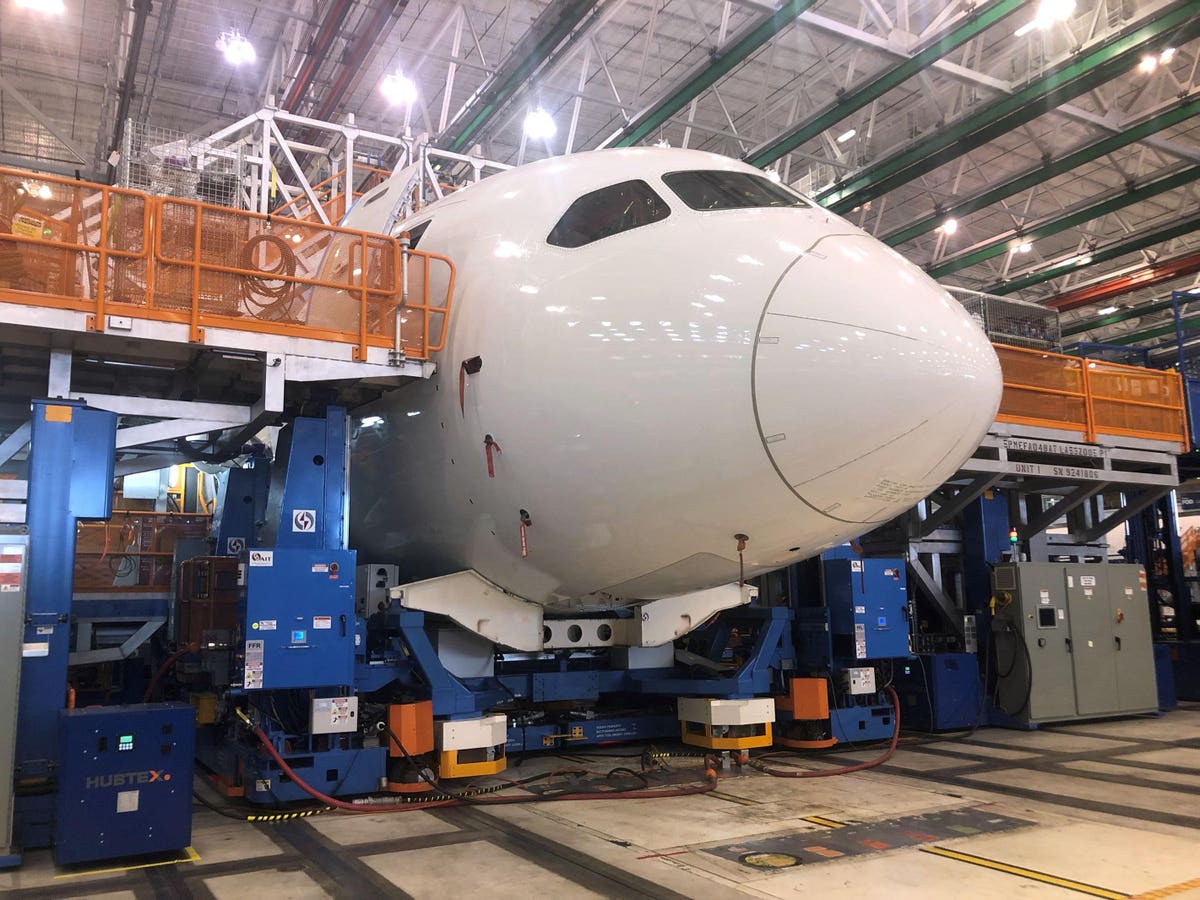Boeing
BA
Boeing faces a 90-day deadline from the FAA to put together a turnaround plan for its safety management system, addressing systemic faults found by an Expert Review Panel, which identified 27 items of concern with Boeing’s engineering and manufacturing capabilities and made 53 recommendations.
The FAA has also asked Boeing to develop a fix for a new 737 MAX design problem that could disable the jet’s engine anti-ice system in some rare circumstances.
A Single Point Of Failure In 737 MAX De-Icing Design
A Boeing review of the standby power system control unit design revealed a single point of failure which can potentially lead to loss “of control and indication of both engine anti-ice systems.” The FAA finds this could “result in loss of thrust on both engines due to damage from operation in icing conditions without EAI and can result in loss of continued safe flight and landing.”
Though the issue has not occurred in service, the FAA has proposed an Airworthiness Directive to address the safety risk. The FAA’s estimated costs per affected aircraft are $5,290, including parts and labor. It could cost U.S. airlines around $1,084,450 to comply with the FAA’s AD.
Following the Alaska Airlines
ALK
The carbon composite was introduced in the MAX program, with earlier 737s using metal. Boeing had requested an exemption based on the safe operation of other 737 MAX models in service. This exemption was essential to the timely certification of the 737 MAX 7. That program is expected to be significantly delayed, impacting key customers like Southwest Airlines
LUV
While no incidents have been reported, the FAA’s proposed advisory circular would eliminate potential safety risks. However, a different de-icing issue on Boeing’s 787 Dreamliner program is based on airlines reporting heat damage.
De-Icing Faults On The Boeing Dreamliner
The de-icing fault affects Boeing Model 787–8, 787–9, and 787–10 Dreamliner airplanes in service. Similarly, it involves engine inlets.
As detailed in the FAA’s proposed Airworthiness Directive, an FAA investigation “found that the seals between the inner and outer ducts and between the outer duct and the aft compartment were missing. This led to EAI air leaking into the aft compartment exposing inlet components to high temperatures. This condition, if not addressed, could cause damage around the EAI duct, leading to reduced structural strength and departure of the inlet from the airplane, resulting in subsequent loss of continued safe flight and landing or injury to occupants from a departed inlet contacting the airplane.”
The proposed AD requires operators to inspect the engine inlet and perform necessary repairs, pending Boeing’s redesign to address the issue permanently.
Boeing and Spirit AeroSystems
SPR
SPR
The design issues around these FAA ADs raise questions over Boeing engineering decisions on aircraft programs. The Expert Panel’s findings suggest that Boeing needs better methods to foster knowledge exchange to develop the next generation of capable engineers. It also found that Boeing needs to mature its safety management system to avoid quality failure modes in manufacturing. That includes closer oversight of its suppliers, like Spirit AeroSystems.
The NTSB reported missing bolts on the Alaska Airlines 737 MAX mid-exit door plug and suggested that the bolts were removed when Spirit AeroSystems staff replaced five damaged rivets on the edge frame forward of the left mid-exit door plug.
It is one of several issues Boeing has encountered with the critical supplier to multiple Boeing programs. At the beginning of February, Boeing confirmed it would need to rework 50 undelivered 737 MAX aircraft after being notified by Spirit AeroSystems of two mis-drilled holes that were out of alignment on the window frame of some fuselages.
Boeing is in talks with Spirit AeroSystems to reverse its spin-off nearly twenty years ago. In its statement on the talks, Boeing said, “We believe that the reintegration of Boeing and Spirit AeroSystems’ manufacturing operations would further strengthen aviation safety, improve quality and serve the interests of our customers, employees, and shareholders.”
Read the full article here





